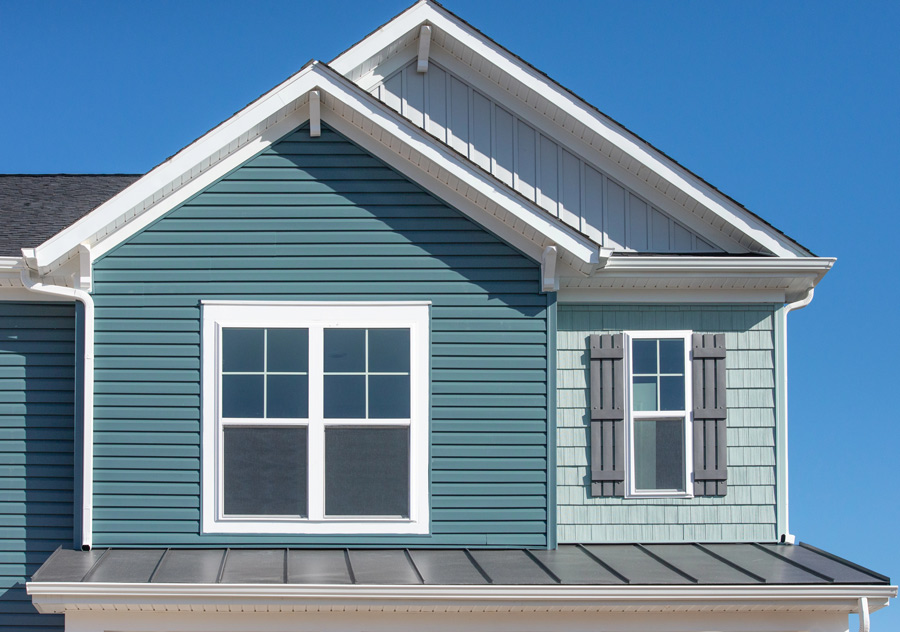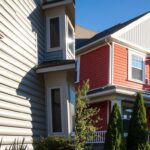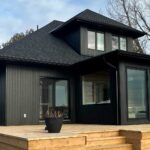Complete Guide to Modern Home Siding in Toronto: Types, Benefits, and Applications
Siding is a crucial element in home construction and renovation. It protects your home while enhancing its appearance. From traditional materials to modern innovations, siding options have evolved to meet diverse needs and preferences. Understanding these options helps homeowners make informed decisions about their property’s exterior protection and aesthetics.
The choice of siding impacts durability, maintenance requirements, and energy efficiency. Different materials offer varying benefits in Toronto’s unique climate. This guide explores siding types, their characteristics, and how they perform in local conditions.
Understanding the
Fundamentals of Home Siding
Home siding serves multiple purposes beyond aesthetics. It acts as a protective barrier against weather elements, helps with insulation, and contributes to your home’s structural integrity. The right siding choice depends on factors like climate resistance, maintenance needs, and aesthetic preferences.
Basic Components of Exterior Siding Systems
– Primary siding material
– Underlayment and moisture barriers
– Insulation
– Ventilation components
– Fastening systems
Types of Siding Materials and Their Characteristics
Vinyl Siding
Vinyl siding remains popular in Toronto for good reasons. It offers durability, low maintenance, and cost-effectiveness. Modern vinyl siding comes in various styles and colors, mimicking natural materials like wood or stone.
Key benefits include:
– Minimal maintenance requirements
– Wide range of color options
– Excellent weather resistance
– Cost-effective installation
– Long-term durability
Fiber Cement Siding
Fiber cement combines cement, sand, and cellulose fibers. This creates a durable, fire-resistant material that excels in Toronto’s climate.
Notable features:
– Superior durability
– Fire resistance
– Pest resistance
– Weather resistance
– Various texture options
Common Siding Problems and Solutions
Moisture Damage
– Problem: Water infiltration behind siding
– Solution: Install proper moisture barriers
– Prevention: Regular inspection of seams and joints
– Action: Immediate repair of visible damage
– Maintenance: Ensure proper ventilation systems
Color Fading
– Issue: UV exposure and weather impact
– Solution: Choose fade-resistant materials
– Prevention: Regular cleaning and maintenance
– Protection: UV-protective coatings
– Selection: Proper initial color choice
Insect Infestation
– Risk: Wood-boring insects and pests
– Solution: Treatment-resistant materials
– Prevention: Regular inspections
– Protection: Proper sealing of entry points
– Management: Professional pest control services
Seasonal Installation Considerations in Toronto
Spring Installation
– Optimal temperature range for materials
– Ground conditions suitable for equipment
– Better curing conditions
– Longer daylight hours for work
– Ideal moisture levels for installation
Summer Installation
– Early morning installation preferred
– Material expansion considerations
– Heat impact on materials
– Worker safety in high temperatures
– Proper material storage requirements
Fall Installation
– Moderate temperatures ideal for installation
– Less rain interference
– Pre-winter preparation
– Better contractor availability
– Optimal curing conditions
Winter Installation
– Limited installation windows
– Special material handling needed
– Higher installation costs
– Weather delay possibilities
– Temperature impact on materials
Professional vs DIY Installation
Professional Installation Benefits
– Warranty coverage guaranteed
– Expert workmanship
– Proper tools and equipment
– Time-efficient completion
– Code compliance assured
– Professional cleanup
– Expert material handling
DIY Installation Considerations
– Significant cost savings
– Complete project control
– Flexible timeline
– Personal satisfaction
– Required tool investment
– Learning curve challenges
– No professional warranty
Current Design Trends in Toronto
Color Trends
– Modern neutrals (grays, beiges)
– Bold dark accents (navy, charcoal)
– Natural earth tones
– Two-tone combinations
– Contemporary pastels
Style Preferences
– Modern minimalist designs
– Traditional heritage looks
– Mixed material facades
– Vertical siding accents
– Textured finishes
Popular Combinations
– Stone and vinyl pairings
– Wood and fiber cement mixes
– Metal and stone contrasts
– Multiple color schemes
– Architectural accents
Comparison with Other Exterior Finishing Options
Material Comparison Table
Material Cost/sq ft Lifespan Maintenance Energy Efficiency
Siding $5-15 20-50 years Low-Medium High
Brick $15-30 100+ years Very Low Medium
Stucco $8-16 50-80 years Medium Medium
Stone $20-40 100+ years Low High
Property Value Impact
Short-term Benefits
– Immediate curb appeal boost
– Enhanced marketability
– Improved energy efficiency
– Modern appearance
– Better weather protection
Long-term Benefits
– 70-80% ROI on average
– Reduced maintenance costs
– Increased resale value
– Extended building protection
– Lower energy bills
Market Considerations
– Popular color choices increase value
– Quality material selection matters
– Professional installation preferred
– Energy efficiency premiums
– Neighborhood compatibility
Energy Efficiency Ratings and Impact
R-Value Comparisons
Material R-Value Annual Energy Savings
Vinyl + Insulation 2.0-5.0 15-20%
Fiber Cement 0.5-1.0 10-15%
Insulated Metal 3.0-6.0 20-25%
Wood 0.8-1.2 8-12%
Energy Efficiency Benefits
– Reduced heating/cooling costs
– Better temperature regulation
– Decreased carbon footprint
– Lower utility bills
– Improved home comfort
Insulation Options
– Built-in foam backing
– Additional rigid foam
– House wrap systems
– Air barrier improvements
– Thermal bridge reduction
Future Trends and Innovations
Emerging Technologies
– Smart siding with temperature sensors
– Self-cleaning surface treatments
– Color-changing material options
– Integrated solar collection panels
– Weather-responsive materials
– Smart home integration capabilities
– Advanced insulation technologies
Sustainable Developments
– Recycled material compositions
– Zero-waste production methods
– Green manufacturing processes
– Biodegradable material options
– Eco-friendly installation methods
– Sustainable sourcing practices
– Carbon-neutral production goals
Design Innovations
– 3D printed textures and patterns
– Customizable surface designs
– Interactive surface capabilities
– Living wall integration options
– Advanced color technologies
– Modular installation systems
– Architectural grade finishes
Material Advancements
– Enhanced durability features
– Improved weather resistance
– Advanced insulation properties
– Lighter weight compositions
– Better impact resistance
– Extended lifespan materials
– Low maintenance innovations
Conclusion: Making an Informed Siding Decision
Selecting the right siding involves balancing multiple factors. Toronto homeowners should consider durability, maintenance requirements, cost, and aesthetic appeal. Professional installation ensures optimal performance regardless of material choice. With proper selection and installation, quality siding enhances home value while providing lasting protection.







